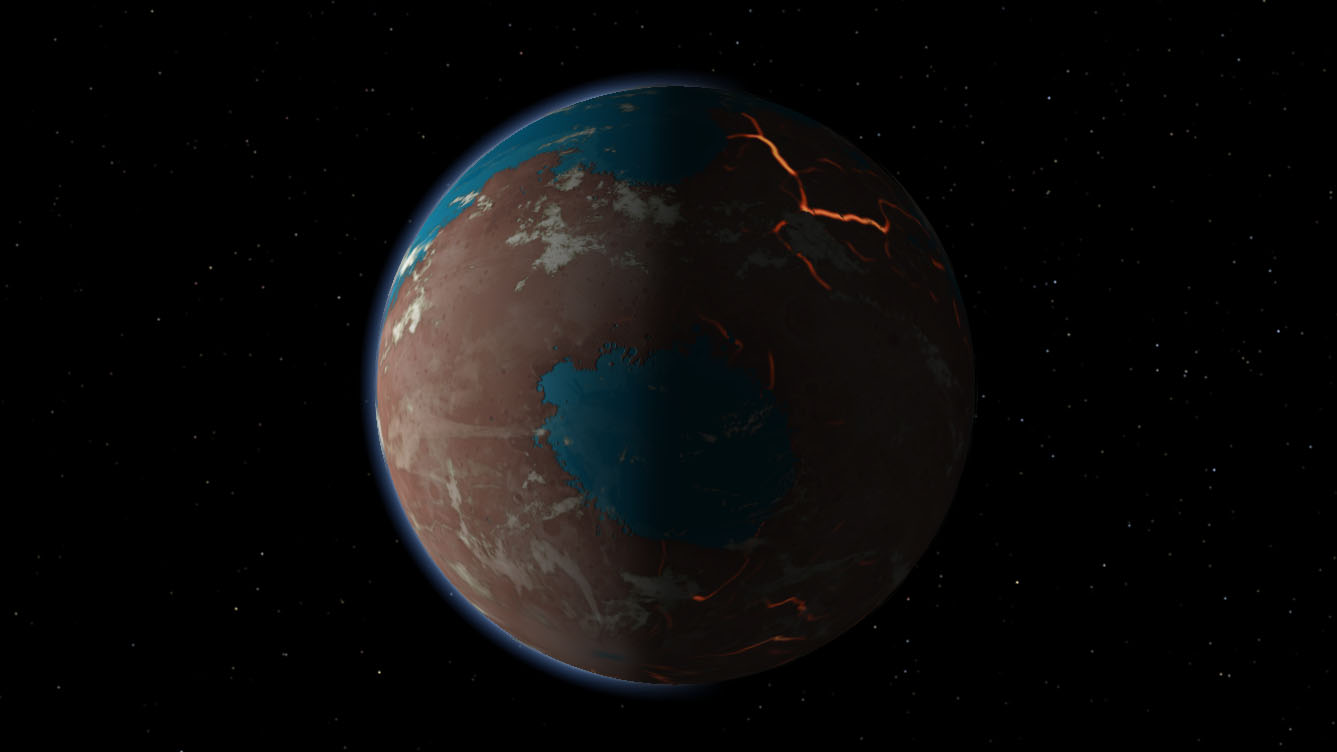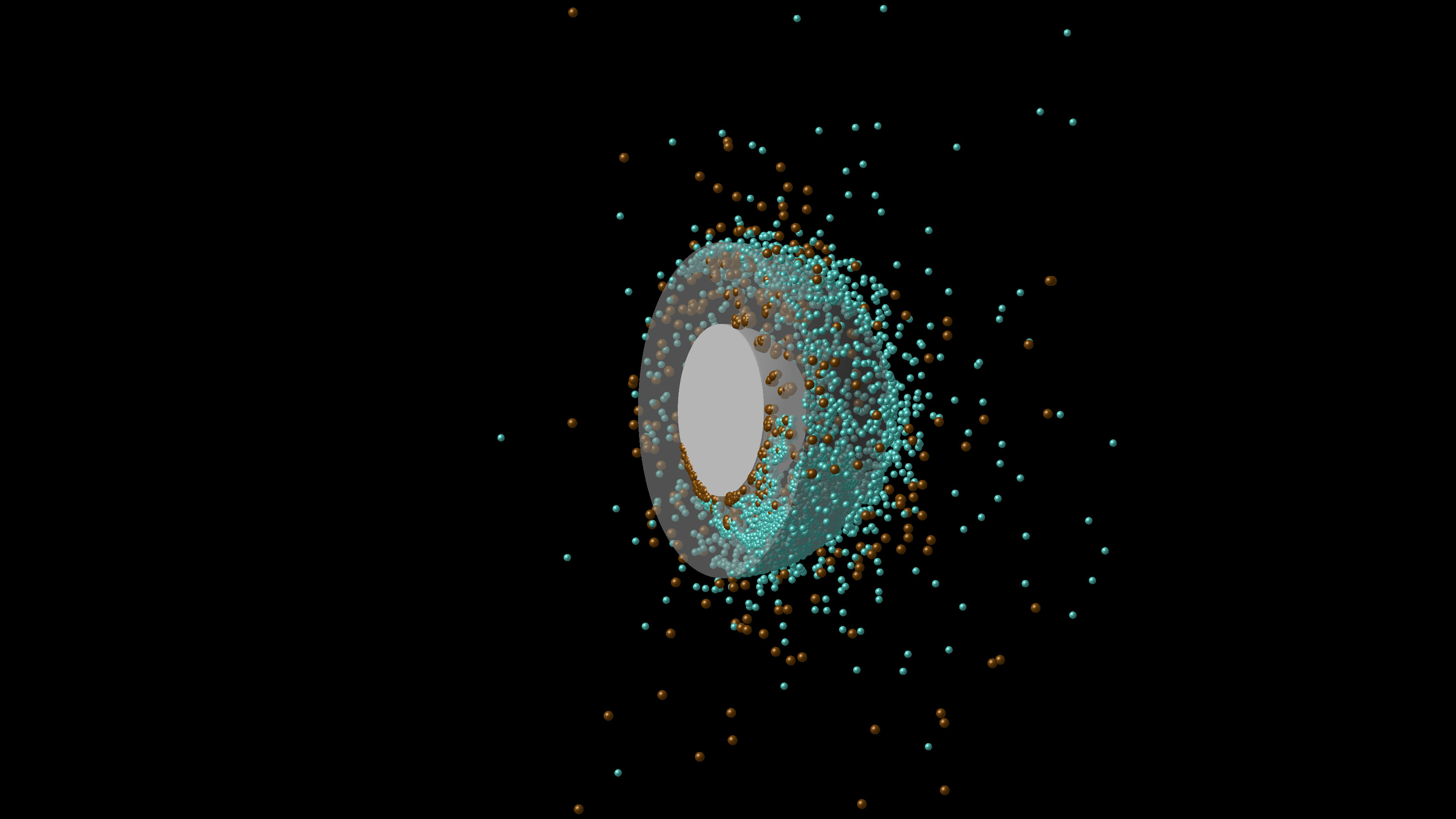Mars took way longer to form than we thought, ancient impacts reveal
Scientists believe early cosmic impacts may have influenced the evolution of Mars, and this suggests that the Red Planet formed much slower than previously thought.
The early solar system was a violent, chaotic place, where planetesimals — small protoplanets measuring up to 1,200 miles (1,900 kilometers) in diameter — asteroids and other debris collided, shaping the planets and celestial bodies we know today.
A new study from the Southwest Research Institute (SwRI) in San Antonio shows that Mars was likely struck by planetesimals early in its history. These large, long-ago collisions introduced "iron-loving" elements to the Red Planet, and those elements, in turn, influenced how quickly the planet formed, according to a statement from SwRI.
Video: See early Mars in new visualization
Related: Mars had surprising 400-million-year lull between giant-impact eras
Using Martian meteorite samples found on Earth, the researchers were able to model the mixture of materials that formed the early Martian mantle. The study revealed that Mars received a variety of elements — such as tungsten, platinum and gold — that are attracted to iron as a result of these collisions.
"To investigate this process, we performed smoothed-particle hydrodynamics impact simulation," Simone Marchi, lead author of the study from SwRI, said in the statement. "Based on our model, early collisions produce a heterogeneous, marble-cake-like Martian mantle."
The meteorite samples suggest that planetesimals bombarded the Red Planet sometime after the planet's primary core formed. That's because "iron-loving" elements like tungsten, platinum and gold generally migrate from a planet's mantle to its central iron core during formation, according to the statement. "Evidence of these elements in the Martian mantle as sampled by meteorites are important because they indicate that Mars was bombarded by planetesimals sometime after its primary core formation ended," SwRI said in the statement.
Breaking space news, the latest updates on rocket launches, skywatching events and more!
Earlier studies of the ratio of tungsten isotopes in the Martian meteorite samples suggested that Mars grew rapidly, within 2 million to 4 million years after the solar system began forming, about 4.6 billion years ago. Because tungsten isotopes are produced via radioactive decay processes over time, the ratio of these isotopes in the mantle of Mars provides a clue about the timeline of the planet's formation.
However, the new models show that early, large collisions could have altered the ratio of elements in the Martian mantle, meaning the planet may have formed over a period of up to 20 million years.
"Collisions by projectiles large enough to have their own cores and mantles could result in a heterogeneous mixture of those materials in the early Martian mantle," Robin Canup, co-author and assistant vice president of SwRI's Space Science and Engineering Division, said in the statement. "This can lead to different interpretations on the timing of Mars' formation than those that assume that all projectiles are small and homogenous."
The findings, published Wednesday (Feb. 12) in the journal Science Advances, provide insight on how Mars evolved and how early collisions affected the planet's formation. The Martian meteorites found on Earth are believed to be the result of more recent collisions with the Red Planet. These meteorite samples offer a unique view into Mars' past, as they contain a record of the planet's history, the researchers said.
"To fully understand Mars, we need to understand the role the earliest and most energetic collisions played in its evolution and composition," Marchi said in the statement.
- How 'ploonets' tell us about planet formation
- The boldest Mars missions in history
- Mars formed fast in massive early growth spurt
Follow Samantha Mathewson @Sam_Ashley13. Follow us on Twitter @Spacedotcom and on Facebook.


Samantha Mathewson joined Space.com as an intern in the summer of 2016. She received a B.A. in Journalism and Environmental Science at the University of New Haven, in Connecticut. Previously, her work has been published in Nature World News. When not writing or reading about science, Samantha enjoys traveling to new places and taking photos! You can follow her on Twitter @Sam_Ashley13.


